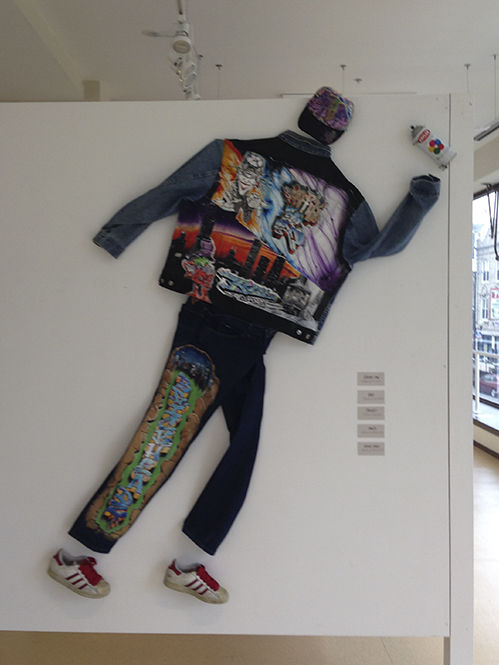Hip hop roots not forgotten at ‘Permanent Record’
October 12, 2015
“Permanent Record: Chicago Hip Hop Kulture” is an interactive four-week festival at the Hairpin Arts Center, 2810 N. Milwaukee Ave., celebrating four decades of hip hop evolution in Chicago. In addition to a gallery exhibit featuring artwork, musical samples and cultural artifacts, the Hairpin Arts Center will host a series of workshops, panel discussions and parties throughout the month.
The event is curated by BboyB of the Artistic Bombing Crew, a veteran Chicago graffiti arts crew.
“It’s a month-long exhibition celebrating 40 years of Chicago hip hop history and culture—music, art [and] dance,” said Amina Norman-Hawkins, teaching artist at Columbia’s Center for Community Arts Partnerships, which is dedicated to community and arts-integrated curricula.
BboyB added that despite the incredible collection that has been amassed for display, only a small portion of Chicago’s hip hop history can be represented by the exhibit’s scope.
Items on display include posters, news articles, musical samples, articles of clothing and artwork—all of which were loaned to the Hairpin Arts Center from artists’ personal collections, according to Norman-Hawkins.
Parties featuring performances are held each Friday, followed by workshops and panel discussions the following Saturday, said Paul Teruel, director of community partnerships at CCAP, which was founded by Columbia in 1998 and partners students and faculty with local K–12 students and community organizations to expand learning opportunities through the arts.
“Each week is dedicated to an element of hip hop,” Norman-Hawkins said. “[The four elements of hip hop] are graffiti art, DJ’ing, MC’ing and breakdancing.”
BboyB added that he thinks the full scope of hip hop culture is often under-appreciated.
“When you say hip hop, all people think is ‘Oh, that’s rap music,’ but they’ve forgotten the other elements of the culture,” he said.
Hip hop first developed in New York in the ‘70s as a response to negative urban environments, Norman-Hawkins said.
“It was a way for creatives to get together,” Norman-Hawkins said. “Instead of battling on the streets with baseball bats and fists, they decided to battle on linoleum or cardboard with their breaking skills, or battle on the mic with their MC skills.”
However, according to Norman-Hawkins, the tight-knit, often segregated neighborhood communities of Chicago have created a vast array of hip hop sounds, setting it apart from other locations.
“There is no Chicago sound,” Norman-Hawkins said. “We have everything: gritty, inner-city Drill music [and] uplifting, socially conscious music.”
Norman-Hawkins added that mass media coverage of the East and West coast hip hop scenes allowed Chicago hip hop to remain underground, resulting in a less-diluted culture.
“The essence of the culture remained intact,” she said. “It never died in Chicago. You can expect to come to Chicago and experience what true hip hop would feel like.”
“Permanent Record: Chicago Hip Hop Kulture” opened at the Hairpin Arts Center on Oct. 2 and will run through Oct. 30. Visit www.hairpinartscenter.org for an event schedule and more information. To learn more about the Artistic Bombing Crew, visit www.artisticbombingcrew.com.








